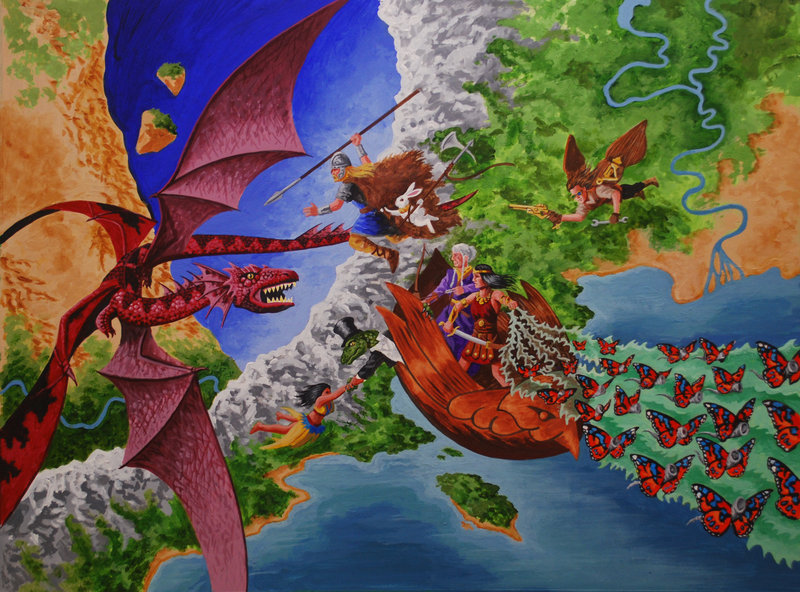The Fantasy Infinity project is approaching a rather exciting milestone. Some people who know and game with me in person already know what I mean, others will just have to find out through this site when the time comes.
As for right now, I think the time has come for another large, meaty preview of the game. The material I’ve posted here so far is almost all from the Core Rulebook (informally the “red book”). So it’s about time I gave the Character Reference (or “blue book”) some love.
To refresh memories (and for anyone who hasn’t read the relevant previous posts), these two books, along with an adventure (the “green book”) and other material, will be sold together as a single product, the Origins Set, the only thing you need to be able to play Fantasy Infinity. The physical version of the Origins Set will thus be a Eurogame-like boxed set, rather than the large hardcover book that has become the de facto standard for tabletop RPGs.
The Character Reference is the book that explains all the abilities your characters can learn. In particular, it explains what all the nodes on charts like the one featured here actually do. It has three main chapters. The first one details the benefits, called Core Masteries, that you get from core nodes – the diamond-shaped ones that often say things like “Sword” or “Axe” on them. The second and longest chapter, a few pages of which you can read here, describes what all the other nodes do – the ovals and plus signs and occasional other shapes that say things like “Knightly Challenge” and “Strike Mute”. The third chapter briefly discusses magic and then describes dozens of spells characters can learn, mostly through Magic cores (which say things like “Elemental” and “Sun”) or spell learning nodes, which look kind of like scrolls.
There are about 210 abilities in the second chapter and I’m shooting for around 80 spells in the third (update Dec 29,’15: it’s now looking like at least 90 and could hit triple digits). By contrast, there are only 23 types of core mastery that the first chapter needs to cover – 12 types of weapons, 5 types of spells, and 6 styles of defence (four armour types plus Shield and Bracers; bracers act like shields but against magic). But there’s a lot more to say about a given core mastery than there is about most other abilities. Why? Well, rather than duplicate a bunch of stuff I’ve already written answering that, why don’t I just post a big huge chunk of that chapter? I think it explains itself rather well.
Here, then, is about 60% of chapter 1 of the Character Reference. After a general introduction to core masteries, most of this excerpt is spent on the complete rules for the weapon cores. As you’ll see right away, and even moreso if you also review the weapons themselves (from the previous entry on this blog), otherwise similar characters will play quite different from each other if they choose to specialize in different weapons.
